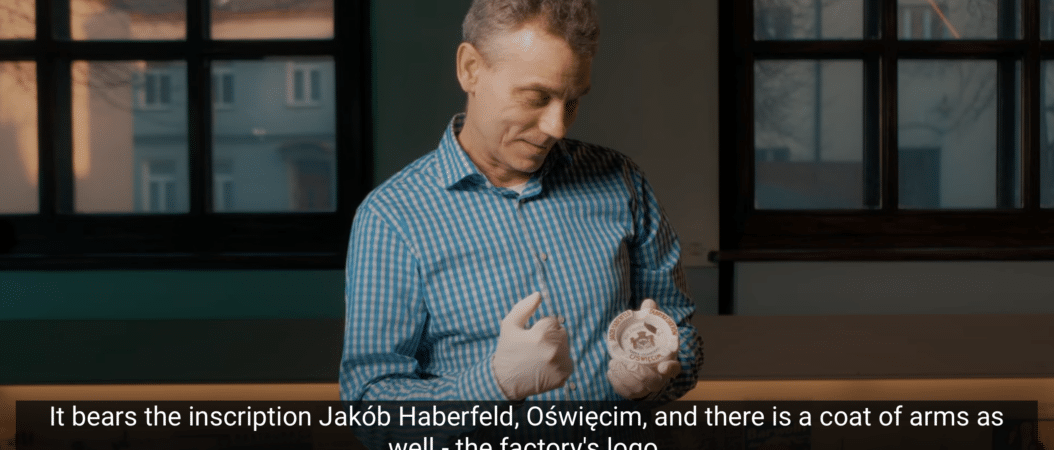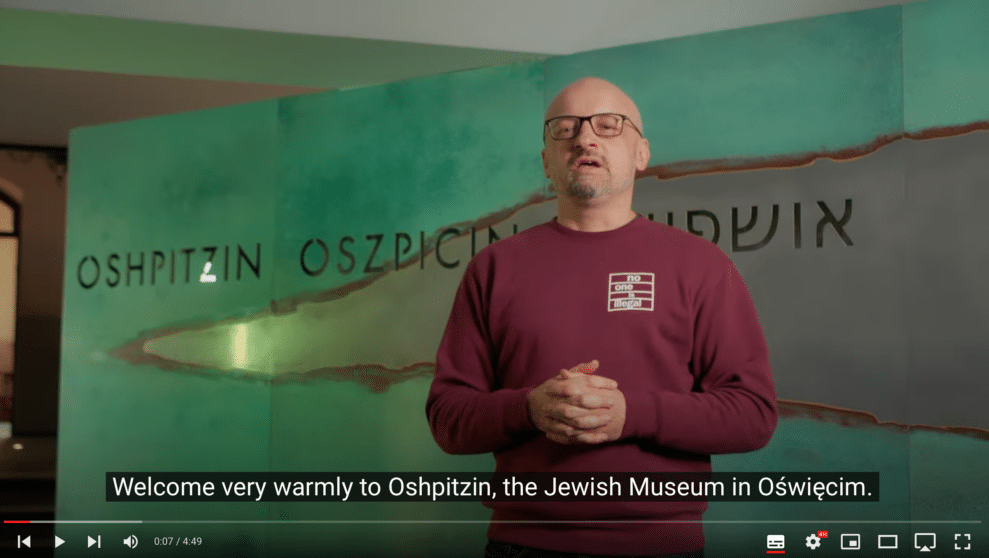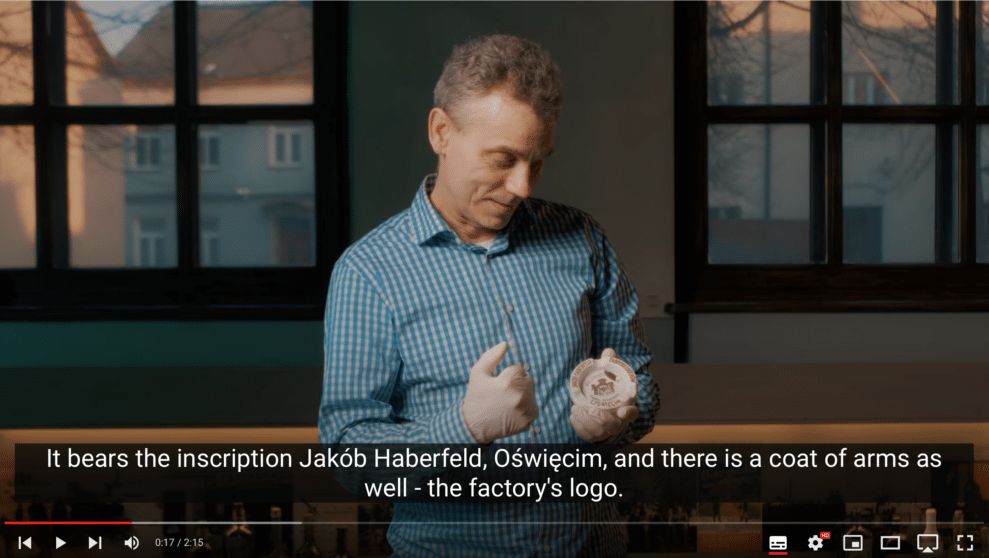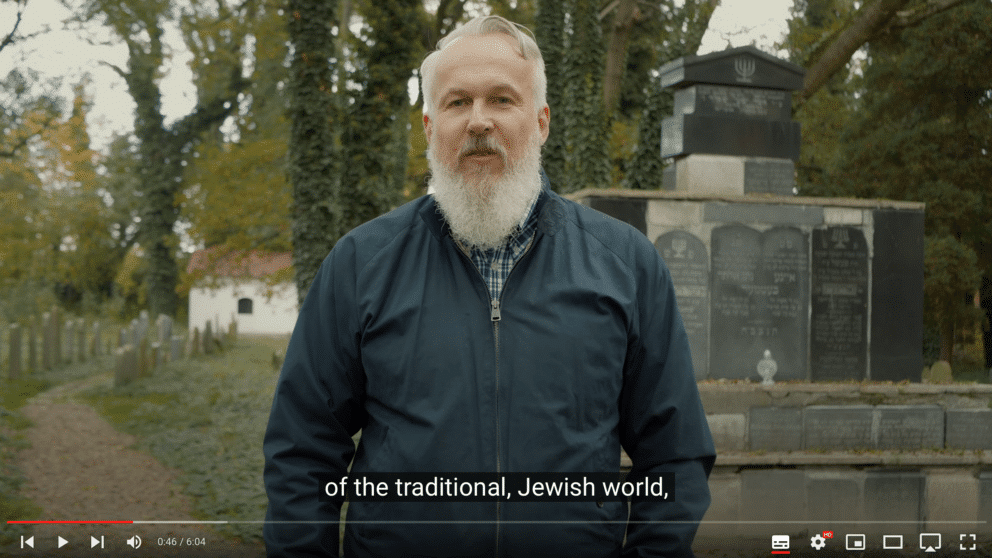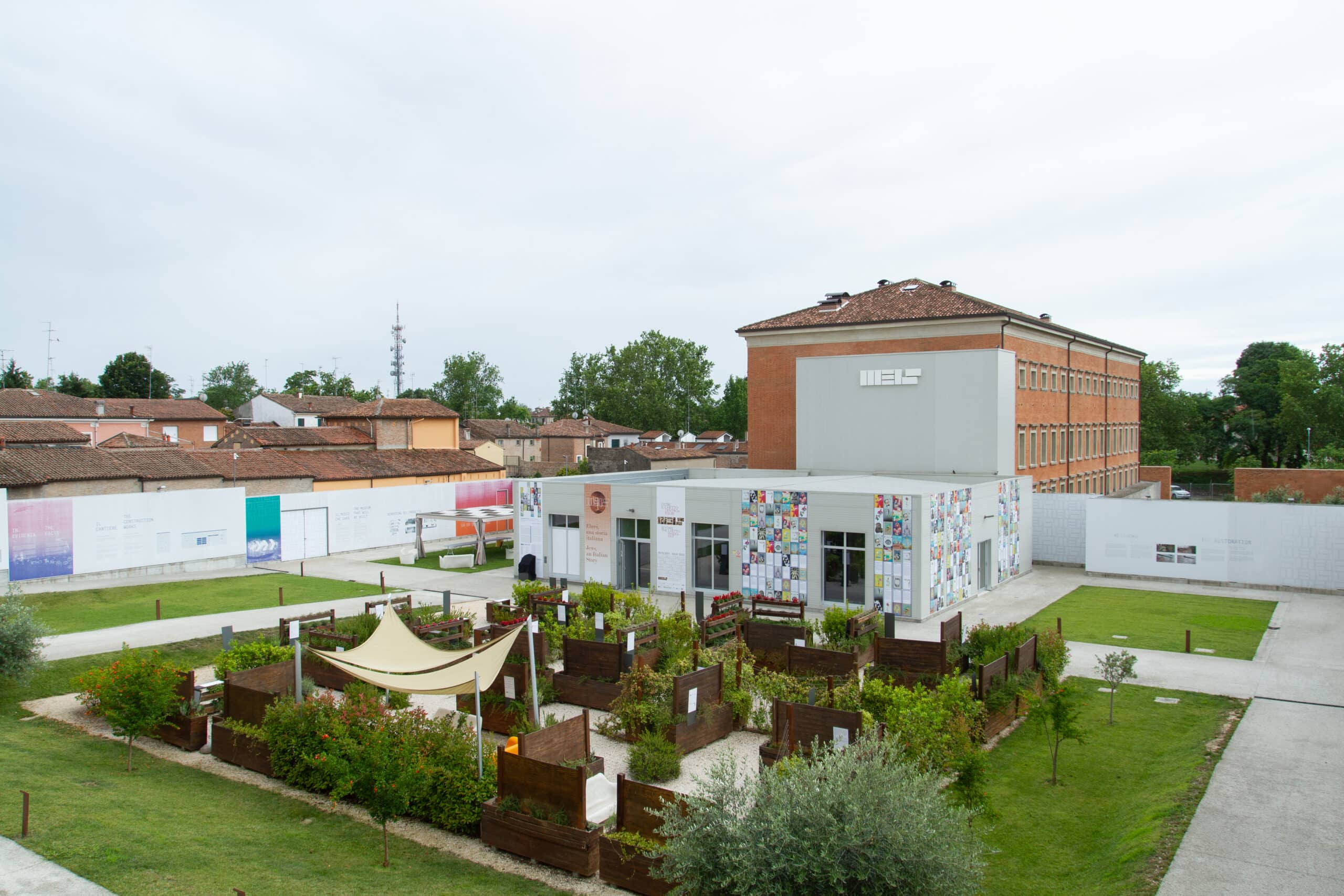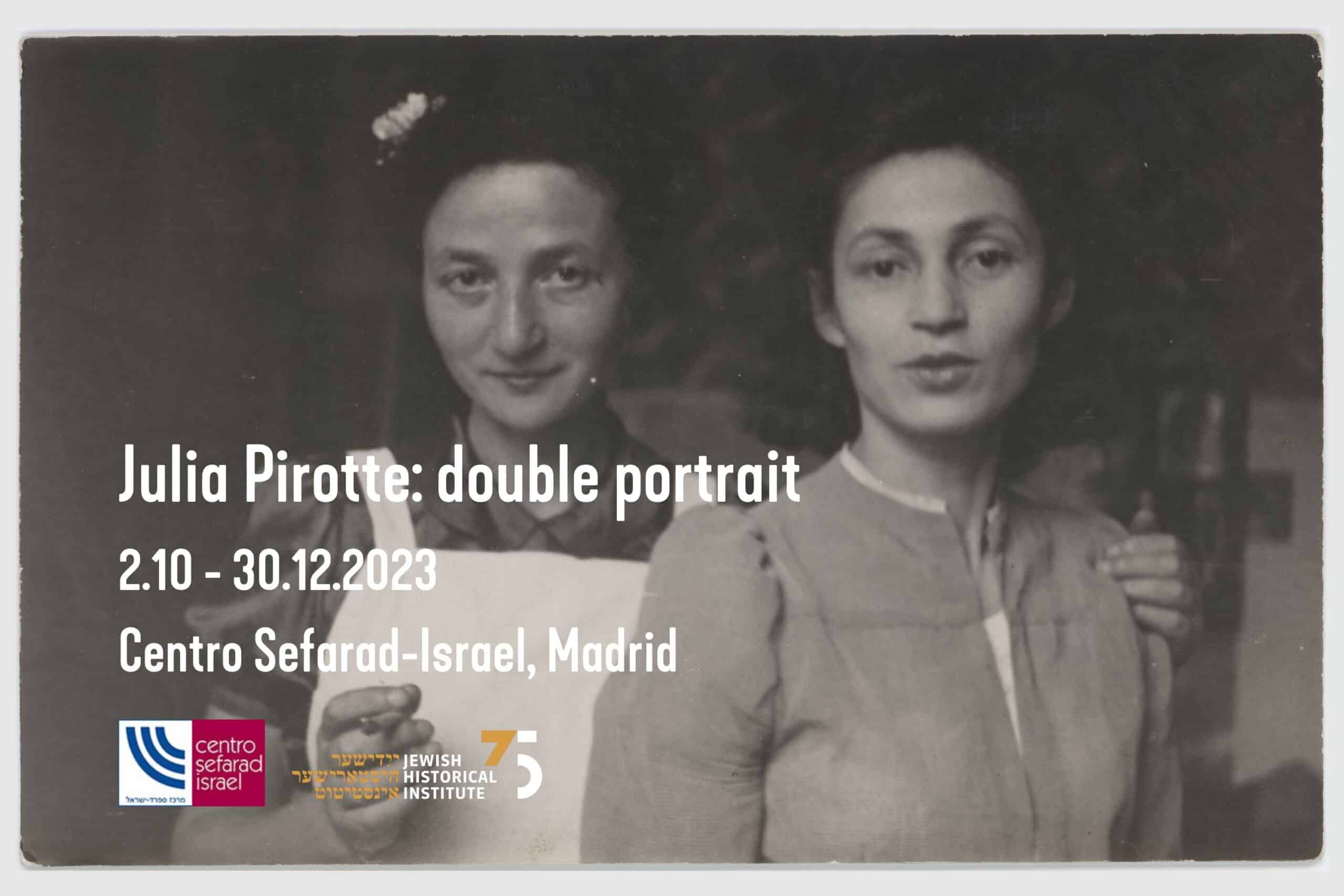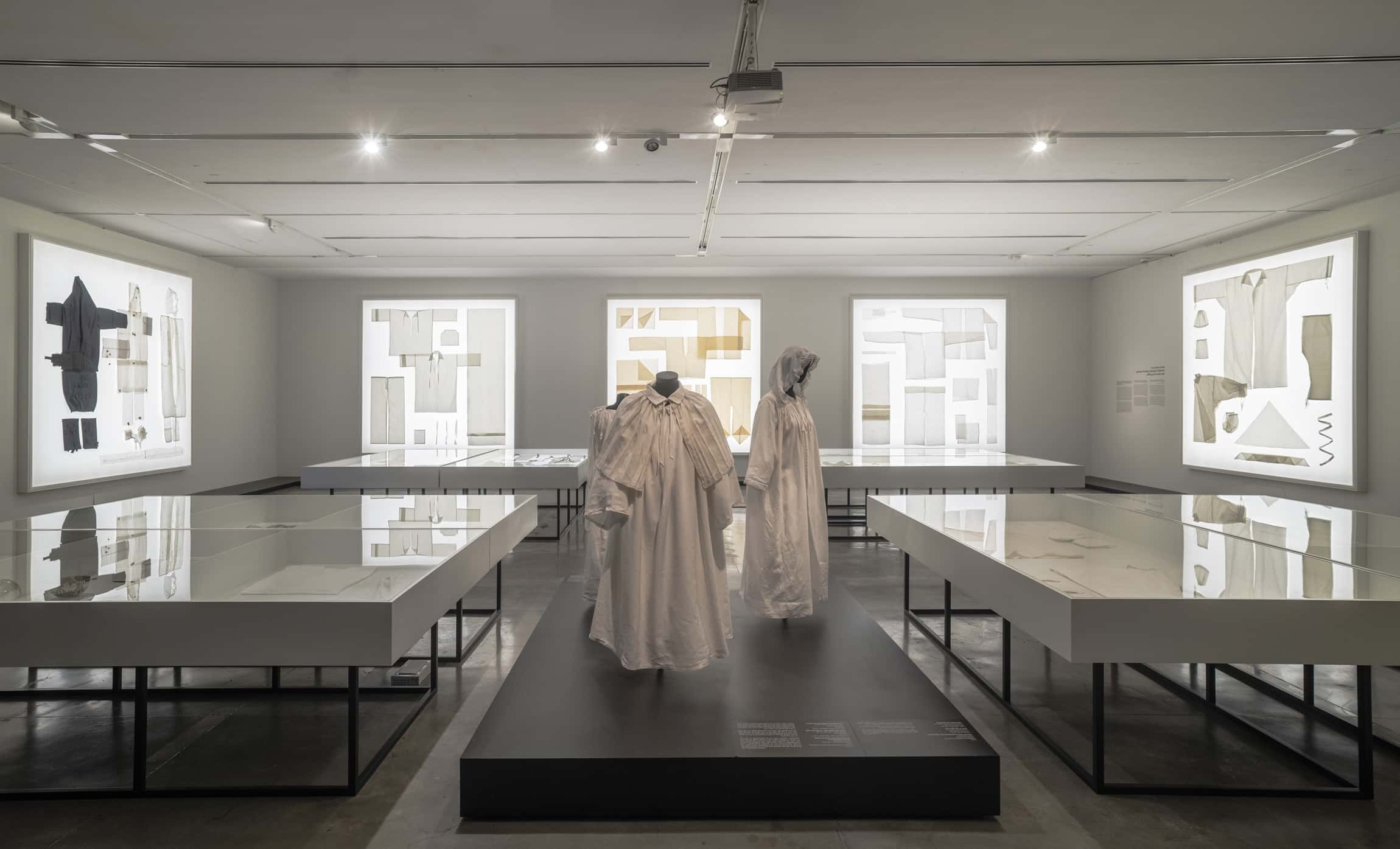The Jewish Museum in Oświęcim, part of the Auschwitz Jewish Center Foundation, has created a project for a virtual tour of the town, the synagogue and the Jewish Museum. The project features 25 videos that allow visitors to go on a journey through the centuries-old and multicultural history of Oświęcim. The digital tour of Oshpitzin (as the town was called by the Jewish community, which made up half of its population before the war) is now available in four language versions: Polish, English, German and Ukrainian.
– We bring the history of Oświęcim closer to everyone who wants to learn more about the rich past of the town, which has become a symbol of Auschwitz and the Holocaust. That is why we created the project. It includes almost two hours of recordings on the most interesting places, monuments and memorabilia related to the history of Oshpitzin. The videos have been prepared in an interesting and engaging way, thanks to which they can also be a starting point for further exploration of the history of the town or educational work with students, including in preparation for a visit to the Auschwitz Memorial Site or a history lesson,” says Tomasz Kuncewicz, director of the Jewish Museum in Oświęcim, and encourages everyone interested to make use of the prepared videos. They are already available on the museum’s YouTube channel and will also be published in the coming months on the Jewish Museum’s social media platforms.
The videos feature historians and educators connected with the Jewish Museum in Oświęcim. Thanks to them, you can learn interesting facts about the town’s architecture, but also biographies of people important to Poland and Oświęcim. Among the presented characters is, for example, the unique story of the friendship between Marta Świderska and Olga Pressler (pre-war students of an Oświęcim high school) or the still widely unknown biography of Berek Joselewicz. He was a colonel in the Polish army, a Polish Jew and a patriot, fighting for example in the Kościuszko Uprising, along with a regiment of Jewish volunteers that he created, and an officer in the Polish Legions in Italy. Joselewicz is also the patron of a street in Oświęcim, which before World War II was known as Jewish Street and was the center of the community’s life.
The films also provide a better understanding of the contemporary image of the town. Bartosz Haduch, an architect from Kraków, talks about the Great Synagogue Memorial Park, which has become a unique and award-winning natural green commemoration in the heart of Oświęcim. Miroslaw Ganobis, an enthusiast of the town’s history, brings the story of his close relationship with the Haberfeld family and talks about the most interesting objects from his collection that are currently on display at the Jewish Museum.
Regardless of taking a digital tour of Oświęcim, you should also consider visiting the town, for example during the upcoming summer holidays. – All those who have the opportunity to come to Oświęcim in person are, of course, more than welcome to visit the town. During such a trip, you can get to know better the places and stories discovered during the virtual tour,” adds Maciek Zabierowski, responsible for educational activities at the Jewish Museum. As he adds, multilingual guides are available to show visitors not only the museum, but also the only surviving synagogue of pre-war Oświęcim, the Jewish cemetery and the Old Town. Those who prefer to visit the museum and the town on their own can download the Oshpitzin app, a mobile guide to historic Oświęcim, free of charge to their smartphone.
The development of the digital tour of the town lasted for the past year and a half and was carried out by the Jewish Museum in Oświęcim together with Manolo Filmy. The project was made with the support of the Dutch Jewish Humanitarian Fund and the Consulate General of Germany in Kraków.
Jewish residents of Oświęcim called their town Oshpitzin (Yiddish: guests). Before the outbreak of World War II, they made up more than half of the population, only a handful of whom survived the Holocaust. The last Jewish resident of Oświęcim, Szymon Kluger, died in 2000. Their story is presented by the Jewish Museum in Oświęcim, part of the Auschwitz Jewish Center Foundation, located in the center of the Old Town and forming a complex together with the historic Chevra Lomdei Mishnayot Synagogue and Cafe Bergson. More information about the institution can be found at www.oshpitzin.pl and on Facebook and Instagram.
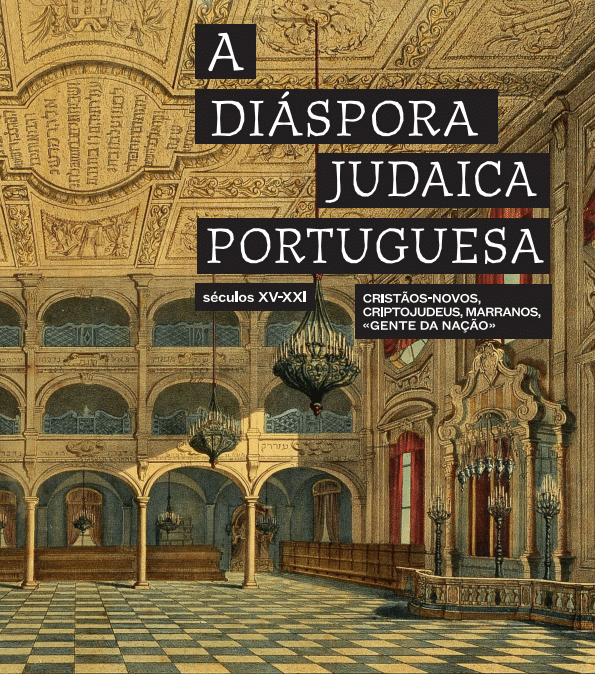 Exhibition
Exhibition
